
Art Curator Role: Ultimate Guide to What They *Really* Do (From an Artist's View)
Step behind the velvet rope with an artist's candid take on what an art curator *really* does. It's a complex world of research, logistics, storytelling, and passion – far more than just hanging art!
The Mysterious Art of Curating: More Than Just Pointing at Walls (An Artist's Candid Take)
Okay, let's talk about art curators. When you hear the word, what pops into your head? Someone swanning around a hushed gallery in chic black clothes, maybe adjusting a spotlight, possibly murmuring something profound about negative space? Yeah, me too, sometimes. It’s like they're the DJs of the art world, selecting the tracks (artworks) to create a perfect vibe (exhibition). Or maybe, from my perspective as an artist, they're more like the conductors of a visual orchestra, trying to get all the different instruments (the artworks, the space, the light, the story) to play in harmony.
But, like assuming a DJ just presses play, that image barely scratches the surface. The role of an art curator is complex, demanding, and surprisingly multifaceted. It's less about silent contemplation and more about juggling research, logistics, storytelling, and sometimes, a healthy dose of diplomacy. It’s a bit like trying to organize a family reunion where every relative is a priceless, temperamental artifact – challenging, yes, but potentially brilliant if you get the mix just right. I often think about the 'personalities' of my own paintings; getting them to 'get along' on a wall can feel like a curatorial act in itself. Honestly, sometimes just getting a frame to hang straight feels like a major logistical victory, so I can only imagine the scale of their challenges.
So, let's pull back the velvet rope and figure out what these art world orchestrators actually spend their time doing. Forget the stereotypes; this is the real deal, seen through my slightly chaotic, art-obsessed lens.
What Does an Art Curator Actually Do? (Spoiler: A Lot)
It turns out, curating isn't just about having 'good taste' (though that helps, probably). It’s a demanding job requiring a blend of scholarly rigor, creative vision, and practical management skills. Think of them as part historian, part storyteller, part project manager, and part detective. They're the ones who decide not just what art you see, but how you see it, and why it matters in that particular arrangement.
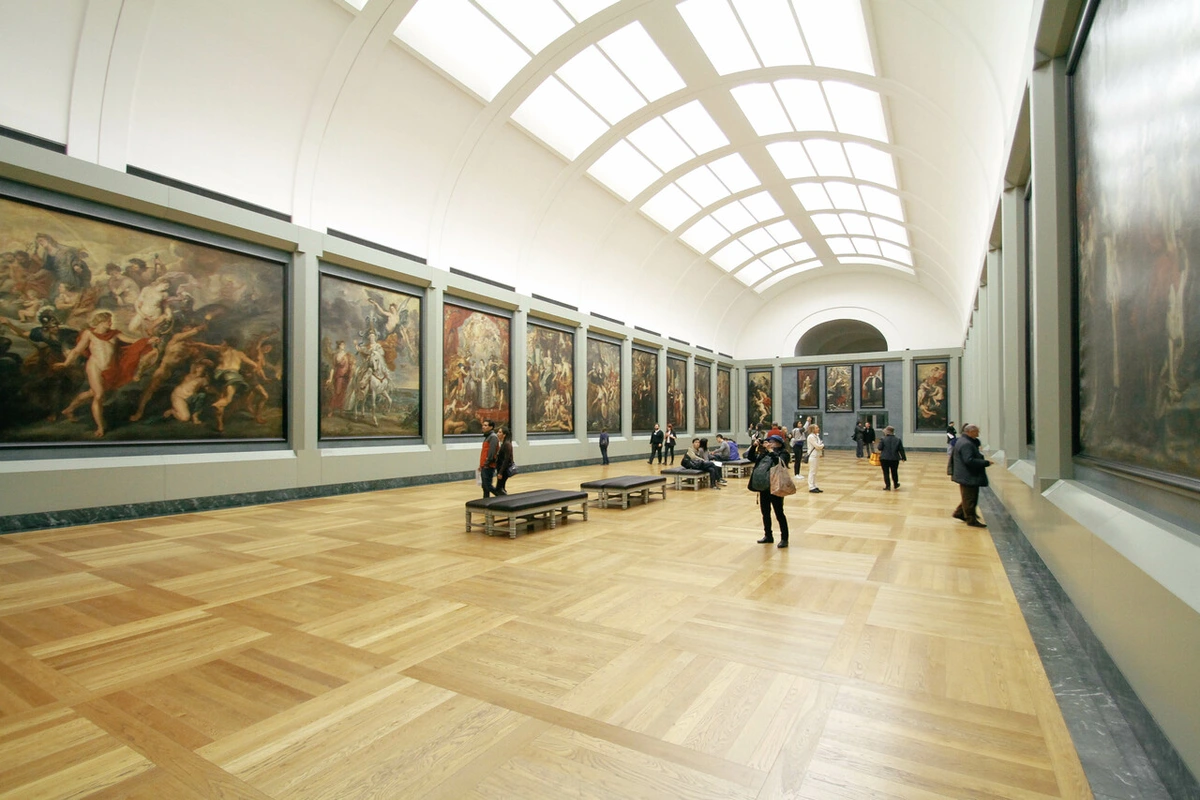
Historically, the role evolved from simply being a 'keeper' or 'custodian' of a collection, often associated with wealthy patrons or institutions. Think of the early collections in places like the Louvre Museum or the Uffizi Gallery. These early 'curators' were primarily concerned with preservation and display, but the modern curator, especially from the late 19th and 20th centuries onwards, became much more active in shaping narratives, researching context, and engaging the public. They moved from being quiet guardians to active interpreters and cultural producers. It's a bit like how artists evolved from just painting portraits to exploring abstract ideas – the role expanded dramatically.
Here’s a breakdown of their key responsibilities – the many hats they wear:
Shaping the Vision: The Narrative Weaver
This is where the 'art' of curating really shines. A curator doesn't just randomly hang pictures. They build worlds. How do they even begin?
- Conceptualizing Exhibitions: They develop the core idea, theme, or argument for an exhibition. What story will it tell? What questions will it ask? It might be about a specific artist (like Picasso), a movement (like Abstract Expressionism), a historical period (check the art history guide), or a contemporary issue. This is similar to how I approach a new series of paintings – there's usually an underlying question or feeling I'm trying to explore, a narrative I want to build across multiple canvases. For instance, a curator might conceptualize a show exploring the influence of Japanese prints on Impressionism, bringing together works by Monet, Degas, and Japanese masters to tell that specific story.
- Selecting Artworks: Based on the concept, they choose the specific pieces that will best convey the narrative. This involves deep knowledge of collections, artists, and the art market. It's a delicate balance, like choosing the right words for a poem – every piece needs to contribute to the overall meaning. And yes, taste plays a role, but it's taste informed by knowledge and the exhibition's specific goals. What happens when the perfect piece is halfway across the world, or owned by a notoriously difficult collector? That's where the detective work and diplomacy come in.
- Creating a Cohesive Experience: They think about how visitors will move through the space and experience the art. The goal is to create a journey that is both informative and engaging, maybe even emotionally resonant – not unlike how arranging tracks on an album creates a flow, or how the composition of a painting guides your eye. The wall color, the lighting, the space between works – it all contributes to the feeling. I've walked into galleries where the atmosphere just felt right, and you know a curator has worked magic there. It's like they've composed the space itself.
The Detective Work: Research and Acquisition
Once the vision is taking shape, the real digging begins. This is the scholarly backbone of curating. It's less glamorous than the openings, but arguably more vital.
- Deep Dives: Curators spend a lot of time researching. They delve into art history, artist biographies, specific artworks, social contexts, and critical theory. They might be trying to understand Van Gogh's influences or the nuances of contemporary Chinese art. It's a bit like falling down a fascinating rabbit hole, piecing together clues from dusty archives or obscure texts. I get lost in research for my own work sometimes, trying to understand the history of a color or the life of an artist who inspires me. It's easy to spend days just following one tiny thread!
- Identifying and Sourcing Artworks: Finding the right pieces might involve negotiating loans from other museums or private collectors, identifying works for potential purchase (do museums buy art?), or even commissioning new work directly from artists. Imagine the diplomacy needed to convince someone to lend their priceless masterpiece for months! It's a skill I certainly don't possess; I struggle to convince my cat to move off my easel.
- Provenance and Authenticity: They investigate the history of ownership (provenance) and verify that artworks are genuine – crucial for maintaining the integrity of a collection and understanding an artwork's journey through time. Provenance isn't just paperwork; it's the story of who owned the art, where it's been – adding layers to its history and value. It's like the artwork's passport and diary combined.
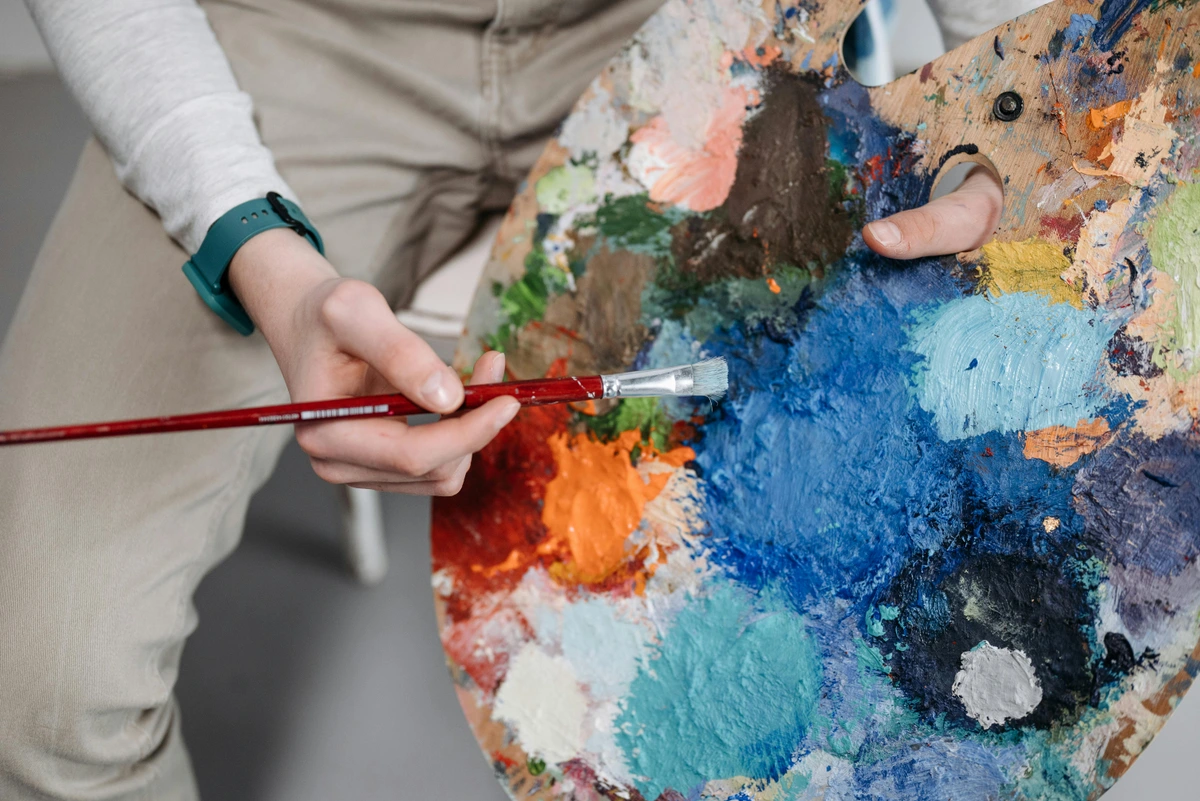
The Logistics Mastermind: Making it Happen
An amazing idea is useless if it can't be executed. Curators are often heavily involved in the practicalities – the stuff that makes my head spin just thinking about it. It's one thing to dream up a perfect arrangement, another entirely to make it physically happen.
- Exhibition Design and Layout: How should the works be arranged? What color should the walls be? How will the lighting work? They collaborate with designers to create the physical environment for the art. Knowing how to display art effectively is key. This is where the vision meets reality, and sometimes the reality of a space dictates changes to the initial grand plan. It's like trying to fit a giant canvas into a small car – sometimes you have to get creative.
- Installation Supervision: They oversee the physical installation of the artworks, ensuring everything is handled correctly and placed according to the plan. This requires meticulous attention to detail – imagine hanging a million-dollar painting! No pressure. I remember the sheer panic of hanging my first large piece; I can't fathom doing that for dozens of priceless works.
- Budget Management: Exhibitions cost money. Curators often need to develop and manage budgets, securing funding through grants or sponsorships. Making ambitious ideas fit limited budgets is a universal challenge, whether you're curating a show or just trying to buy art supplies. It's the less glamorous side, but someone has to count the pennies (and the millions).
- Collaboration: Curating is rarely a solo act. They work closely with registrars (who handle logistics and paperwork), conservators (focused on art care), educators, exhibition designers, marketing teams, and, of course, artists. It's a complex ecosystem, and the curator is often at the center, coordinating everyone. It's like herding very creative, sometimes eccentric, cats.
The Storyteller: Interpretation and Education
A curator's job is also to bridge the gap between the artwork and the audience. They are translators, making the often-complex world of art understandable and engaging. They don't just show you the art; they help you see it.
- Writing Texts: They write the explanatory texts you see on gallery walls, contribute essays to exhibition catalogues, and craft artwork descriptions. This requires translating complex ideas into accessible language, sometimes needing to decode art jargon. Writing a concise, insightful wall text is an art in itself – much harder than it looks, like trying to distill the essence of a painting into a few sentences. It reminds me of writing an artist statement – trying to explain something that feels intuitive.
- Public Engagement: Many curators give public talks, lead gallery tours, and participate in educational programming to help visitors connect with the art. Seeing someone's face light up when they finally 'get' a piece of art is incredibly rewarding, whether you're the artist or the curator explaining it. It's about sparking that moment of connection.
- Making Art Accessible: They aim to provide context and insight, helping audiences understand the meaning of art and appreciate it on a deeper level, whether it's abstract art or historical masterpieces. They help you see why something is considered important art, not just what it is. Think about seeing a single, seemingly simple abstract painting versus seeing it placed within the context of the artist's career, alongside their sketches, and with text explaining the historical moment it was created in. The curator provides that crucial framework that transforms looking into understanding.
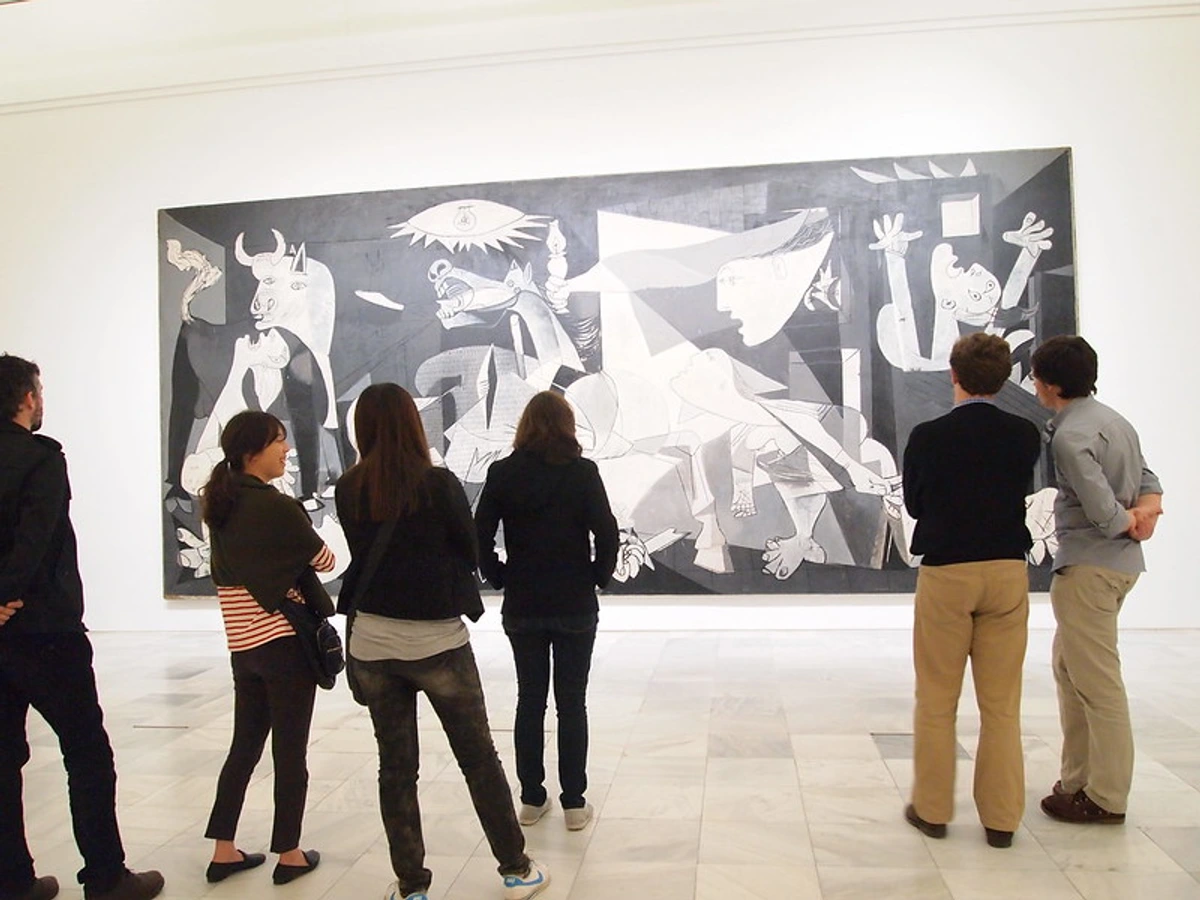
The Caretaker: Preservation and Collection Management
Especially in museums, curators are stewards of cultural heritage. They are the guardians of history and beauty. This is a long-term commitment, thinking centuries ahead.
- Working with Conservators: They collaborate with experts on the preservation and care of artworks, ensuring the long-term survival of the collection. This is a huge responsibility – protecting objects that have survived centuries or represent crucial moments in history. It's like being a doctor for priceless objects.
- Collection Oversight: They monitor the condition of objects, make recommendations for conservation treatment, and contribute to collection development strategies. Deciding what to acquire for a collection is a major decision, shaping the institution's future narrative. It's not just about buying something cool; it's about building a legacy.
- Database Management: Keeping detailed records of artworks is essential for research and management. Less romantic, perhaps, but absolutely vital for keeping track of priceless objects. Imagine losing track of a Rembrandt because someone forgot to update a spreadsheet!
Different Flavors of Curator: It's Not One-Size-Fits-All
Just like there are many types of artwork, there are different kinds of curators, often defined by where they work and their specific focus. Think of them as different instruments in the art world orchestra, each with their unique sound and role:
- Institutional Curators: These are the curators most people think of, working in museums (like the Met, Tate Modern, or maybe even smaller regional ones like the artist's museum near 's-Hertogenbosch) or large public galleries. They are the keepers of the flame, often specializing in specific periods, regions, or media, responsible for the institution's collection and exhibition program.
- Independent/Freelance Curators: These agile project whisperers work on a project-by-project basis, hired by galleries, museums, or other organizations to develop specific exhibitions. They have more flexibility but less job security – the art world's freelancers. They're like the indie filmmakers of the curatorial world.
- Commercial Gallery Curators: Working in private galleries (like those in Chelsea, NYC or London), their role often blends curatorial tasks with sales. They are the market navigators, organizing exhibitions designed to showcase and sell the work of the gallery's represented artists. It's a different kind of balancing act, where aesthetic vision meets commercial viability.
- Corporate Curators: Some large companies maintain art collections, and corporate curators manage these, acquiring works and organizing displays within the company's spaces. Art in the workplace? Someone has to make that happen. It's not just about decorating; it's often about reflecting company values or engaging employees.
- Artist-Curators: Sometimes, artists take on the role of curator, organizing exhibitions of their own work or that of their peers. This brings a unique perspective, grounded in the practice of making art itself. It's a fascinating blend of creation and presentation. I've curated small shows of my own work, and the challenge of seeing it through someone else's eyes (even my own, but in a different role) is surprisingly difficult!
- Digital Curators: With the rise of online platforms and virtual exhibitions, digital curators are becoming increasingly important. They specialize in selecting, organizing, and presenting art in online spaces, considering user experience and digital storytelling. This involves understanding how people interact with art on screens, the potential for interactivity, and the technical considerations of online display. It's a new frontier in curation, with unique challenges and opportunities for global reach.
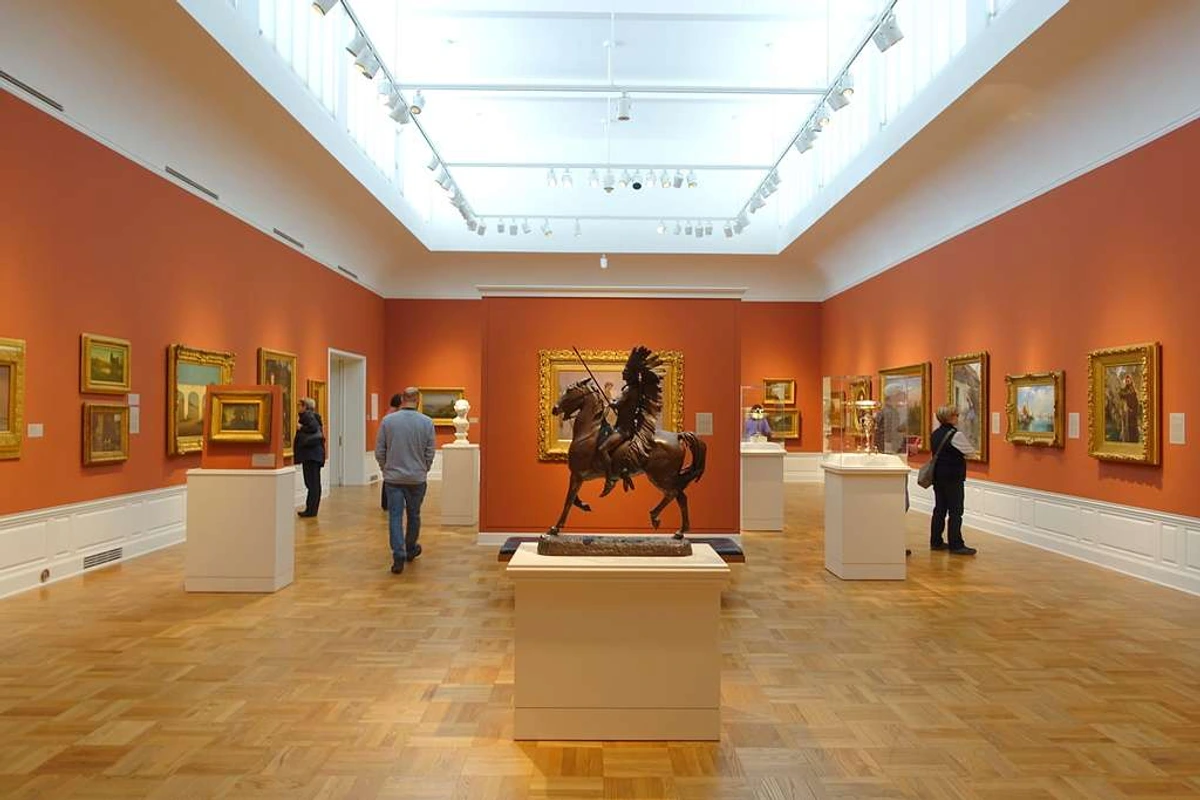
Frequently Asked Questions (The Stuff You Really Want to Know)
Let's hit some quick questions before we dive into how one actually becomes one of these art world wizards.
Q1: Do curators get to choose anything they want for an exhibition?
Not usually. Choices are influenced by the exhibition's concept, the institution's mission, budget constraints, availability of works, loan agreements, and often, committee approvals. There's freedom, but within specific parameters. It's not quite like having a blank canvas.
Q2: How much do art curators make?
Salaries vary widely depending on the type of institution (museums often pay less than commercial galleries or corporate roles), location, experience level, and education. It's generally not a field people enter solely for high financial rewards. Passion is usually the main currency.
Q3: Is being a curator glamorous?
It can have glamorous moments (openings, travel, meeting famous artists), but much of the job involves detailed research, writing, administrative tasks, and logistical problem-solving. Think more library stacks and spreadsheets than red carpets. Though the openings can be fun! And yes, sometimes you spill coffee on an important document, just like anyone else.
Q4: Can anyone be a curator?
While passion for art is essential, professional curating typically requires specialized education and significant experience. However, anyone can 'curate' in a broader sense – organizing a personal art display, creating a themed collection, or even sequencing photos tells a story. You're probably already a curator of your own space or digital life!
Q5: What's the difference between a curator and a gallerist/dealer?
A curator primarily focuses on the intellectual and educational aspects of selecting, organizing, and interpreting art, often in a non-profit or institutional context. A gallerist or art dealer runs a commercial art gallery with the primary goal of selling art, representing artists, and navigating the art market. While there's overlap, the core mission is different.
Q6: Do curators decide what art museums buy?
Curators typically research potential acquisitions and make recommendations, but the final decision to buy art for a museum collection usually involves acquisition committees and the museum director, considering factors like budget, collection strategy, and relevance. They are key advisors, but rarely the sole decision-makers.
Q7: How do curators work with living artists?
This is a crucial relationship! Curators visit studios, engage in conversations about the artist's practice and ideas, and collaborate closely on exhibitions, especially solo shows or commissions. They act as interpreters and advocates for the artist's vision, helping to bring new work into the public eye. It's a dynamic and often deeply rewarding collaboration. I remember one curator visiting my studio and pointing out a recurring motif I hadn't consciously noticed – it completely shifted my perspective on my own work!
Q8: Is 'digital curation' a real thing?
Absolutely! With more art and exhibitions existing online, digital curators are needed to select, organize, and present art in virtual spaces. This involves understanding online platforms, user experience, and how to create engaging narratives in a digital format. It's an evolving part of the field, dealing with everything from virtual reality exhibitions to curating online art sales platforms.
The Skills You Need (Beyond Just Having Good Taste)
So, you want to be the person deciding what goes on the wall? It takes more than just an eye for aesthetics. Think of it like baking a complex cake – you need the right ingredients (skills) and the right technique. And maybe a little bit of magic.
- Deep Art Knowledge: A strong foundation in art history, theory, and criticism across different periods and movements is essential. You need to know your stuff, inside and out. It's not just knowing names and dates, but understanding the why behind the art.
- Research Prowess: The ability to dig deep, find information, synthesize complex ideas, and assess sources critically. This is where you fall down those fascinating rabbit holes and emerge with gold. It requires patience and a genuine curiosity, like being an art detective.
- Stellar Communication: Excellent writing skills for wall texts, essays, and proposals, plus strong verbal skills for presentations and networking. You need to be able to talk and write about art in a way that makes people listen and understand. And sometimes, you need to explain why that pile of bricks is art.
- Organizational Wizardry: Juggling multiple projects, deadlines, budgets, and people requires serious organizational skills. Think air traffic controller, but with more fragile objects and temperamental artists. Making chaos look like a plan is key. My studio is a testament to my lack of this skill, so I deeply admire it in others.
- Visual Acuity: The ability to analyze artworks closely, understand composition, technique, and materials – essentially, knowing how to 'read' a painting or sculpture. You need to see beyond the surface and understand the artist's choices.
- People Skills: Building relationships with artists, collectors, donors, colleagues, and the public is crucial. Navigating the delightful (and sometimes tricky) personalities of the art world requires finesse. It's a world built on connections, after all.
- Financial Acumen: Understanding budgets, fundraising, and sometimes the art market's financial side is often necessary. Money makes the art world go 'round, unfortunately. It's not just about passion; it's about making the numbers work.
- Adaptability & Problem-Solving: Things go wrong. Loans fall through, artworks arrive damaged, budgets get cut. Curators need to think on their feet and find creative solutions. The show must go on! It's like when a painting isn't working, and you have to figure out a completely new approach on the fly.

Becoming an Art Curator: The Path (or Winding Road)
There isn't one single formula, and let's be honest, it's a competitive field. It often requires a combination of education, experience, and networking – and a good deal of patience. It reminds me a bit of the journey to becoming a recognized artist – lots of hard work, persistence, and hoping someone notices. (You can see my own winding path on my /timeline).
- Education: Most curators have at least a Master's degree, typically in Art History, Museum Studies, or Curatorial Studies. A PhD is often preferred for senior roles in large museums. These programs often include coursework in archival research, exhibition planning, collection management principles, and critical theory – the practical and intellectual tools of the trade. The academic foundation is crucial.
- Experience: Practical experience is vital. Internships, volunteering, gallery assistant positions, or research assistant roles provide invaluable hands-on learning and connections. You need to get your hands dirty, metaphorically speaking (and sometimes literally, though hopefully not with priceless art!).
- Networking: Attending exhibition openings, lectures, and conferences helps build relationships within the art world. It's about who you know, but also about genuinely connecting with people who share your passion. It's less about schmoozing and more about building genuine relationships.
- Specialization: Developing expertise in a particular area (e.g., photography, 17th-century Dutch painting, contemporary art from a specific region) can make you stand out. Find your niche, the area you're truly passionate about.
- Persistence: It can take time to land that first curatorial role. Keep learning, writing, seeing art, and making connections. It's a marathon, not a sprint – a bit like developing an artistic practice over a lifetime. Don't give up!
Why Does Curating Even Matter? (Asking for a Friend)
Okay, so they do a lot. But why is it important? In a world saturated with images, why do we need people to select and arrange art for us? Why can't we just scroll through everything ourselves?
I sometimes think about my own attempts to organize things – my studio, my thoughts, even just a playlist. There's a satisfaction in finding connections, creating a flow, telling a story through arrangement. Curating does this on a much grander, more public scale. They provide the filter, the structure, the narrative that helps us make sense of the vast, sometimes overwhelming, world of art. They are the guides in the visual wilderness.
- Context is King: Curators provide context, helping us understand where an artwork came from, what the artist was trying to do, and how it relates to other works or ideas. They help us see beyond the surface (what makes art 'important'?). For example, seeing an abstract painting next to the object or feeling that inspired it, or alongside works from the same period, completely changes how you experience it. Without context, you might just see shapes and colors; with it, you see a window into a mind, a time, a conversation.
- Sparking Dialogue: Good exhibitions provoke thought, raise questions, and create conversations. They can challenge our perspectives and introduce us to new ways of seeing the world. As an artist, I can only hope my work sparks conversations; curators create entire environments designed to do just that. They build stages for ideas.
- Cultural Preservation: In museums, curators play a vital role in preserving and interpreting cultural heritage for future generations. They are the guardians of our visual history, ensuring that important works are cared for and understood.
- Championing Artists: Curators can bring attention to overlooked artists or provide crucial platforms for emerging talent, shaping careers and influencing the art historical narrative. They can be incredible advocates, opening doors that artists might struggle to open alone.
- Making Connections: They weave threads between different artworks, artists, time periods, and cultures, revealing unexpected relationships and enriching our understanding. They show us how seemingly disparate things are connected, creating a richer tapestry of art history and contemporary practice.
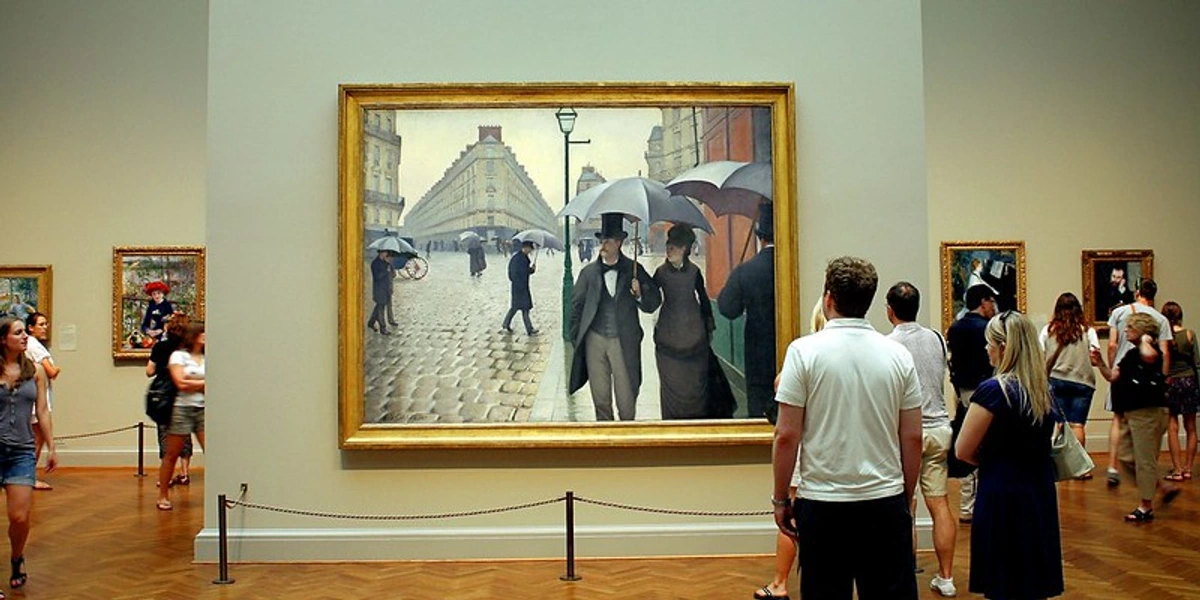
Curator Confidential: Challenges, Rewards, and Ethics
Like any job, being a curator isn't all smooth sailing and champagne receptions. There are dragons to slay and treasures to uncover. And a few ethical tightropes to walk.
Challenges:
- Funding: Securing money for exhibitions and acquisitions is a constant battle. The art world, like many others, runs on money, and finding it is tough. It's a bit like trying to fund a passion project – you have to be creative and persistent.
- Politics: Navigating institutional bureaucracy, competing priorities, and sometimes differing opinions can be tricky. It's like navigating the currents of institutional seas, trying to keep the ship pointed in the right direction.
- Hours: The workload can be intense, especially leading up to an exhibition opening. Late nights and stressful deadlines are part of the package. It's not a 9-to-5 gig when you're passionate about it.
- Subjectivity: Art is subjective, and curators inevitably face criticism over their choices. Not everyone will like what you put on the wall, and that's okay, but it can be challenging. You need a thick skin and confidence in your vision.
- Pressure: Balancing scholarly integrity with public appeal, institutional mandates, and artist relationships requires careful negotiation. It's a high-wire act, trying to please many different stakeholders.
Ethical Considerations:
Curators often face complex ethical dilemmas. These can include:
- Deaccessioning: The process of formally removing an object from a museum's collection. This is highly controversial and governed by strict ethical guidelines, often only permitted to fund future acquisitions or care of the collection, not just cover operating costs. It's a heavy decision – essentially deciding a piece no longer belongs in the public trust.
- Repatriation: Dealing with requests for the return of objects to their country or culture of origin, particularly those acquired during colonial periods or through questionable means. This involves navigating complex histories, legal issues, and moral responsibilities.
- Working with Sensitive Materials: Curating exhibitions that deal with difficult or controversial topics requires careful consideration of how to present the material responsibly and ethically, respecting both the art and the audience.
- Conflicts of Interest: Maintaining professional integrity when dealing with donors, collectors, and the market, ensuring decisions are made for the benefit of the collection and the public, not personal gain.
Rewards:
- Passion: Working directly with art and artists is a primary motivator for most curators. That quiet hum of obsession that drives so many in the art world.
- Discovery: The thrill of researching, uncovering new information, or finding the perfect artwork. Like finding a hidden gem in a dusty archive or a forgotten masterpiece.
- Creation: Bringing an exhibition concept to life and seeing visitors engage with it. It's a form of creation in itself, building an experience out of individual pieces.
- Impact: Contributing to cultural understanding and dialogue. Helping people see the world differently through art. Making a real difference in how art is perceived and appreciated.
- Learning: Continuously learning about art, history, and the world. The art world is always evolving, and there's always more to discover. It's a lifelong journey of intellectual and visual exploration.
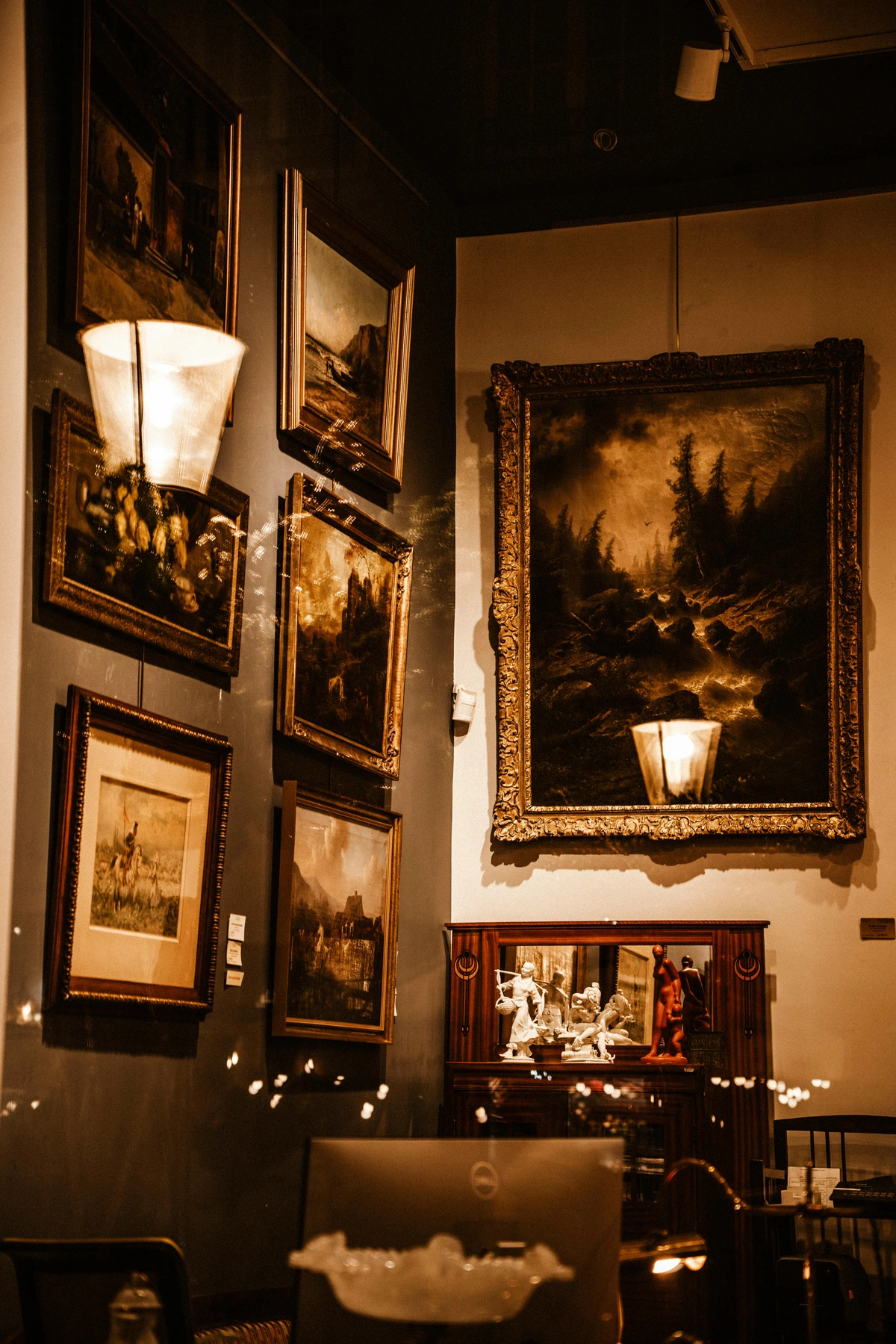
The Final Brushstroke: More Than Meets the Eye
So, the next time you walk into an exhibition, take a moment. Look beyond the artworks themselves and consider the invisible hand that brought them together. The curator isn't just someone who picks pretty pictures; they are researchers, storytellers, organizers, and advocates who shape how we see and understand art. They are the architects of our art experiences.
It’s a role that requires a unique mix of skills and a deep passion. They build bridges between the past and present, between the artist's intention and the viewer's experience. Maybe it is a bit like being a DJ, after all – selecting just the right pieces, arranging them thoughtfully, and creating an experience that resonates long after you've left the room (or the dance floor). Or perhaps, returning to my own world, they are like fellow artists, composing with existing works to create something new – a dialogue, a feeling, a moment of connection.
Appreciating their work might even inspire your own 'curatorial' projects, whether it's arranging art in your home (perhaps even finding something new to add?) or simply organizing your bookshelf in a way that tells your story. We are all curators of our own lives, aren't we? And understanding the professional curator's craft just gives us a deeper appreciation for the art of arrangement, context, and storytelling, wherever we find it.




